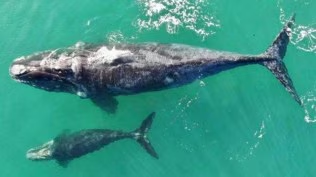A Russian satellite was "less than 10 metres apart" from hitting a satellite of American space agency NASA in a near miss that could have put several lives at risk, NASA has claimed, as per a report in The Telegraph. The deputy administrator of NASA, Pam Melroy, stated that several experts were "really scared" by the incident that took place on February 28. Notably, "it is not possible to manoeuvre either satellite".
The US Department of Defense was also monitoring the close pass between the Thermosphere Ionosphere Mesosphere Energetics and Dynamics Mission (TIMED) spacecraft and the defunct Russian Cosmos 2221 satellite. The Russian spy satellite came extremely close to the US satellite, which helps monitor the Earth's atmosphere.
Former astronaut Colonel Melroy stated that hundreds of bullet-fast fragments of debris would have shot around Earth if the satellites had collided. He cautioned that the problem was "monumental."
Ms Melroy said at the Space Foundation's Space Symposium, "It was very shocking personally and for all of us at NASA. "On February 28 a Nasa spacecraft called Timed and a Russian satellite, neither of them manoeuvrable, were expected to make a close path. We recently learnt that the path ended up being less than 10 metres apart, less than the distance of me to the front row. Had the two satellites collided we would have seen debris generation, tiny shards travelling at 10,000 miles per hour, waiting to puncture a hole in another spacecraft and potentially putting human lives at risk."
She added that the team was really worried about it. "It's kind of sobering to think that something that's the size of the eraser on the end of your pencil could wreak such havoc - but it can. We're all worried about this. Timed really scared us."
NASA unveiled its Space Sustainability Strategy on Tuesday with the goal of keeping orbits as clear as possible while also improving satellite and debris mapping and monitoring. Notably, over 10,000 satellites orbit the Earth currently, a four-fold increase since 2019, and the number is expected to rise rapidly.
Disclaimer: The copyright of this article belongs to the original author. Reposting this article is solely for the purpose of information dissemination and does not constitute any investment advice. If there is any infringement, please contact us immediately. We will make corrections or deletions as necessary. Thank you.







